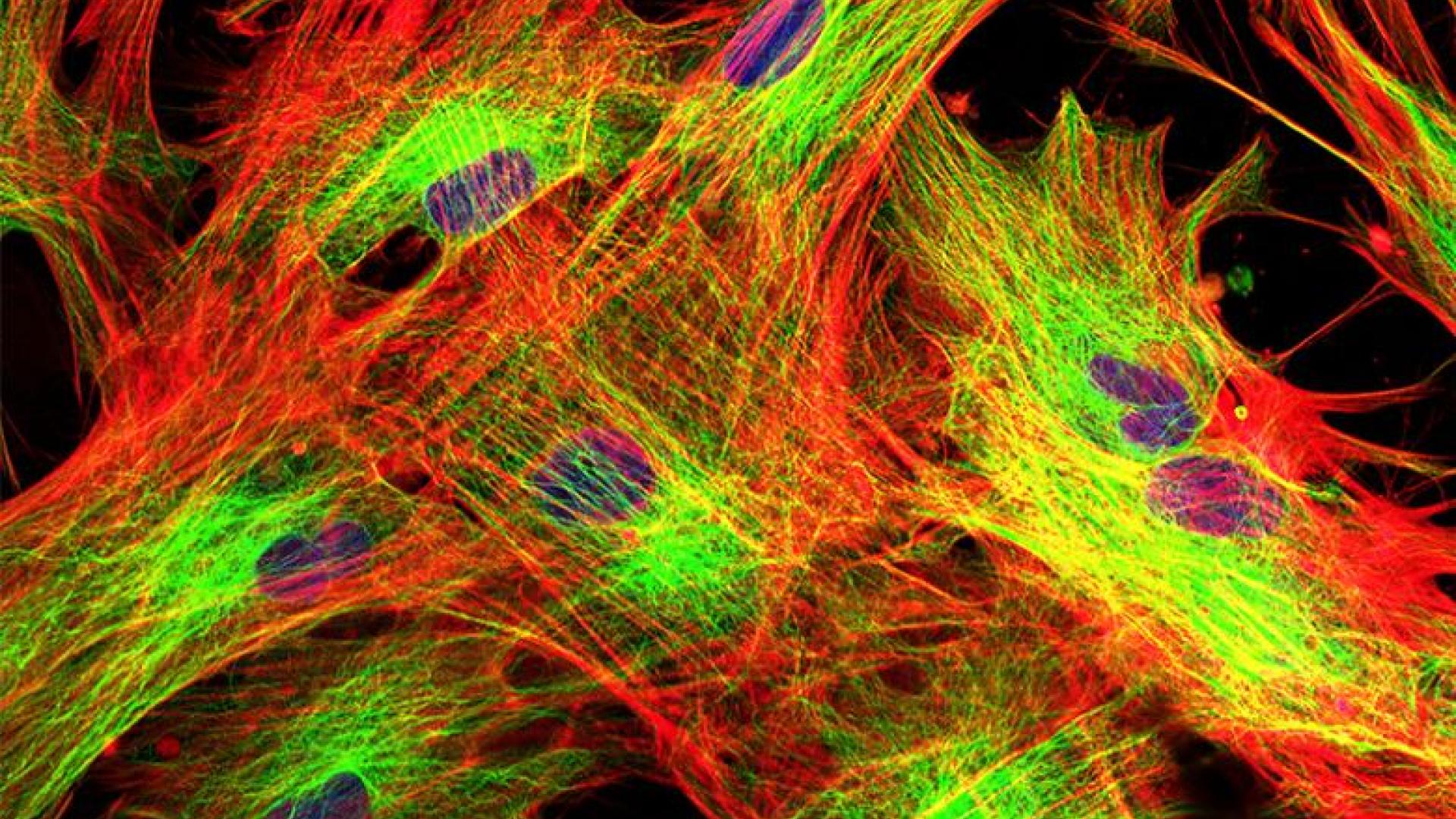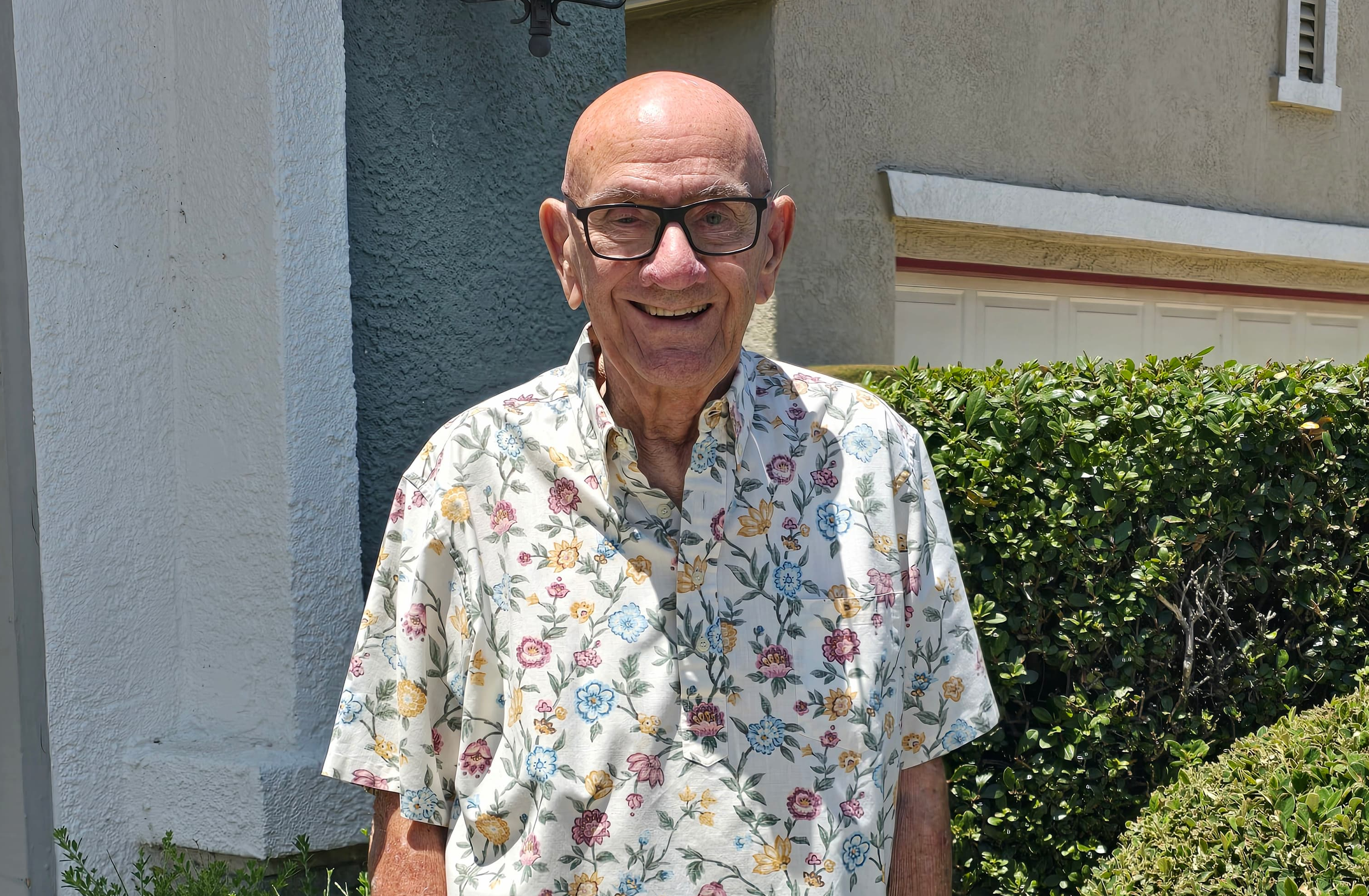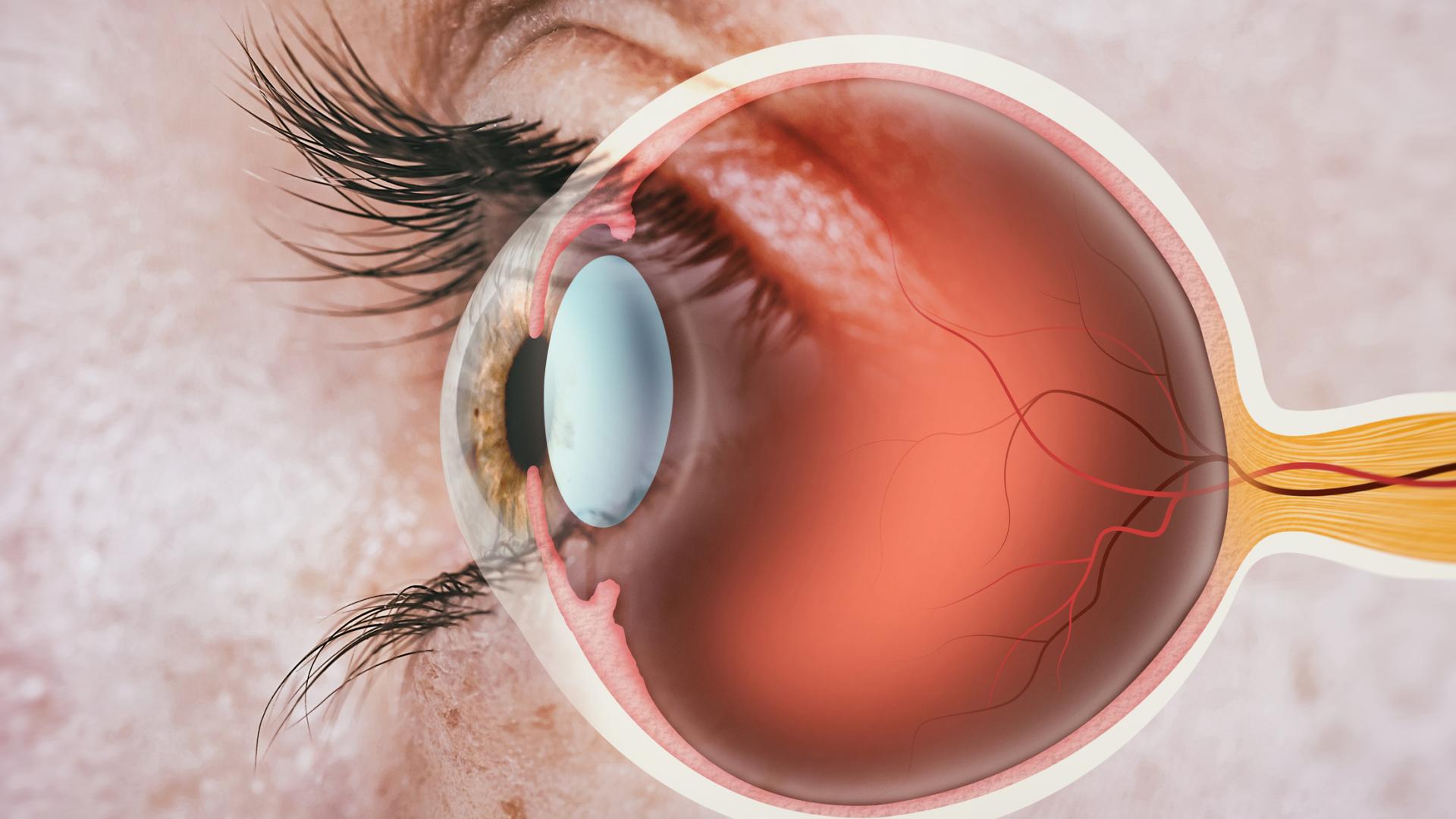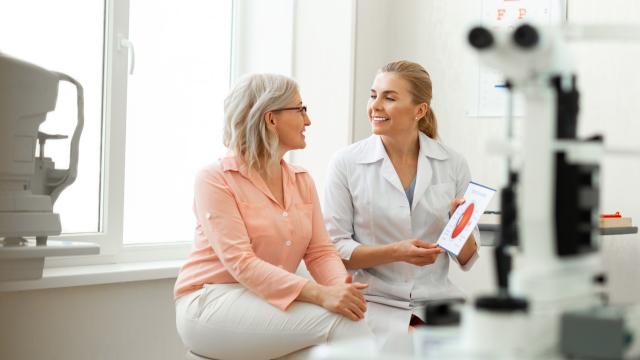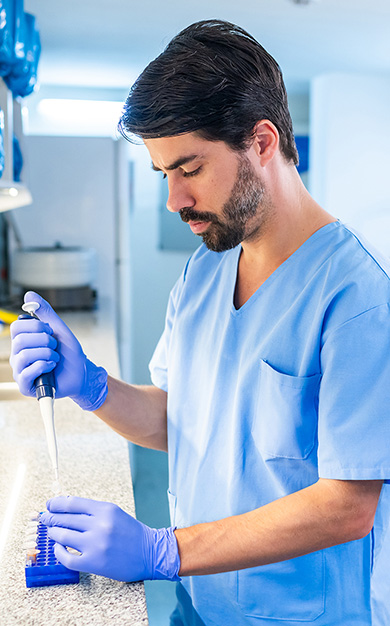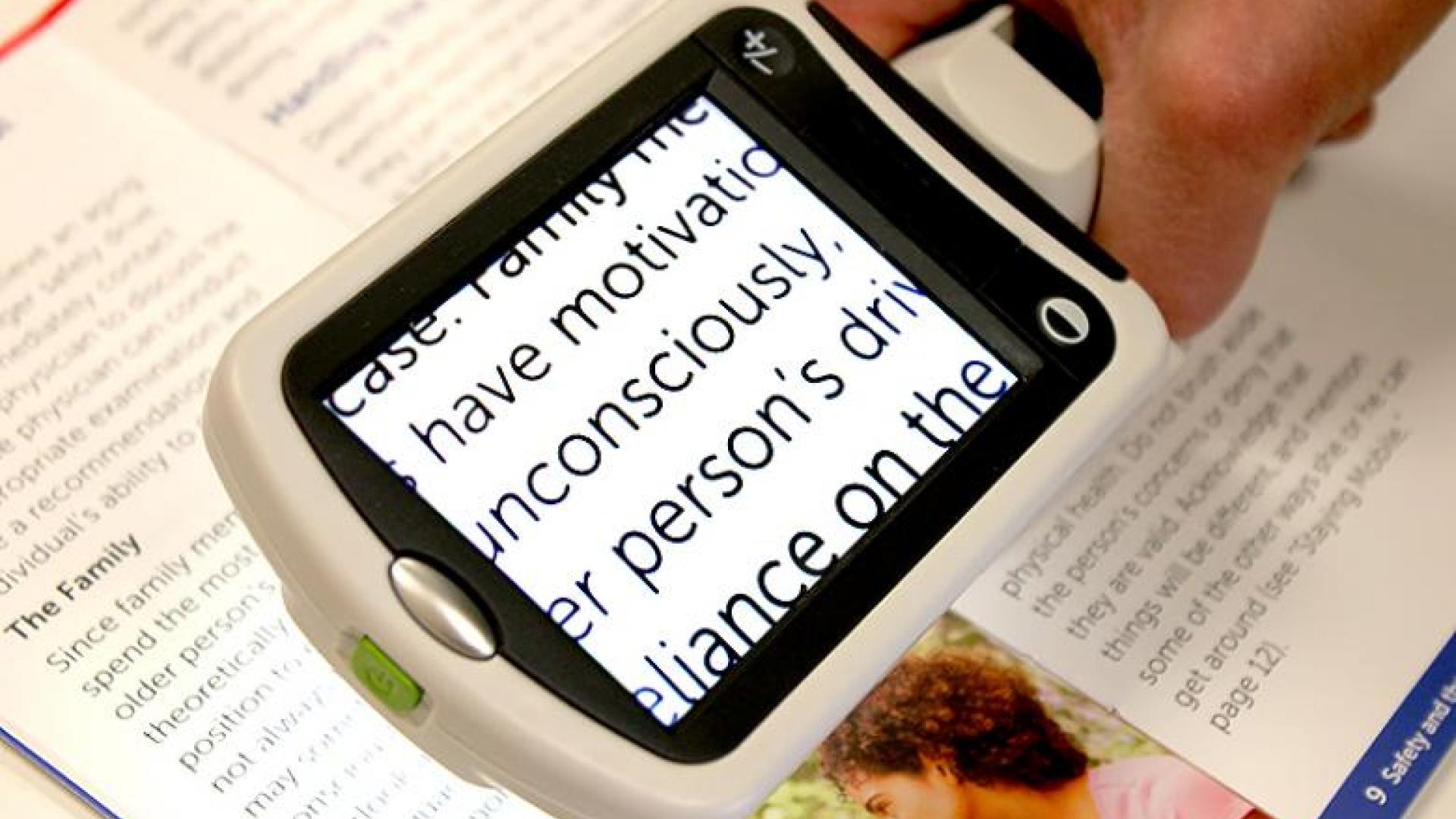
When people with glaucoma are diagnosed and treated at an early stage, many will not lose significant vision. Unfortunately, some will develop low vision. This article explores what that is, how low-vision specialists perform an evaluation, and provides helpful tips on low- and high-tech devices that can help a person use their remaining vision most effectively.
What is Low Vision?
The definition of low vision varies. One definition is visual acuity of 20/70 or worse in the better-seeing eye that is not correctable with eyeglasses. Measurement of 20/70 vision means that a person with unimpaired vision can see the chart from 70 feet away, whereas a person with low vision would have to stand closer at 20 feet to see the same size letter. Another definition of low vision is uncorrectable vision loss that interferes with one’s daily activities. This definition is useful because often a visit to the low-vision specialist will focus on ways to improve the patient’s independence and quality of life.
In addition to affecting visual acuity, glaucoma also causes peripheral and eventually central vision field defects, or so called “tunnel vision.” Glaucoma patients also can have impaired sensitivity to contrast or problems with glare, and more difficulties in adapting to the dark. This can result in difficulty seeing in low light or when lighting changes abruptly, bumping into objects, difficulty when reading, or challenges when navigating uneven terrain.
The Low-Vision Evaluation
A low-vision evaluation focuses less on the specific disease, and more on the impact that the disease and resultant low vision have on the patient. Therefore, the low-vision specialist will ask about your daily activities, overall health and cognition level, as well as aspects of your social history, including whether you live alone or have support from family and friends. The low-vision specialist will also ask whether you are still driving.
During the examination, the low-vision specialist will evaluate your distance and reading vision, contrast sensitivity, field of vision, and additional tests. The specialist will also determine how you use your vision. Some patients will need to use other parts of their visual field, not just the central part. This is called “eccentric viewing.” Sometimes training with eccentric viewing can help patients use low-vision devices more effectively.
Helpful Devices
Next, the low-vision specialist will work with you to determine whether there are specific devices that can help you accomplish your goals. A game changer for many low vision patients has been the iPhone. One important point is that there will not be one device that can help you with all of your tasks, but rather different devices for different activities. Also, magnification devices may not help glaucoma patients who do not yet have central vision loss, which only occurs in very advanced glaucoma.
Magnification
Full-Field Microscope Glasses
For reading, full-field microscope glasses (very strong reading glasses), are useful because they free up hands to hold the reading material and are portable. However, there are some disadvantages, including the need for very good lighting and a limited field of view, such that the reading material may need to be moved in front of the eyes rather than the usual mode of using our eyes to scan the text. This brings up an important point about magnifiers. As the power of the magnification increases, it results in other challenges such as decreased field of view and image movement, which makes it more difficult to learn how to use the device effectively. However, with practice, patients can adapt and benefit from these devices.
Stand Magnifiers
A stand magnifier is another option for reading. The device sits on the page and the consistency between the lens and the text results in a more stable image than that of a handheld magnifier. The stand magnifier may also have its own lighting, which is beneficial for reading. The disadvantage is that these magnifiers tend to be less portable and require the user to move the magnifier across the text.
Handheld Magnifiers
Handheld magnifiers are ideal for people without any tremors or weakness, and they are portable and more useful in situations that only require short-term reading, such as reading price tags and menus.
Electronic Magnifiers
Electronic magnification (closed circuit television, i.e. CCTV, or a video magnifier) has some advantages because it projects a larger field of view on a screen, provides adjustable magnification and contrast modes, and produces no peripheral distortion. However, a major disadvantage is its cost. An alternative to CCTV is electronic readers (e-readers) such as the Kindle or iPad. These devices allow you to adjust the font size and contrast, and have text-to-speech functionality. However, the magnification is not as great as with CCTVs and glare may still be a problem depending on the device.
Low- and High-Tech Tips
Low Tech
- Improve lighting with a gooseneck lamp directed at the reading material.
- Carry a penlight with you at all times.
- Wear visors when outdoors to help reduce glare, or try yellow clip-on or wraparound yellow or amber sunglasses. Your low-vision specialist can perform a glare evaluation, and before purchasing any sunglasses try them out on a bright sunny day.
- Move closer to the TV or to the stage during performances.
- Borrow large-print books from the library.
- Purchase large-print remote controls, calendars, games, and books.
- Use rubber bands on certain medications to help you distinguish them.
- Put safety pins on blue clothing to separate them from black items.
- Switch from ball point pens to felt-tipped pens, which are bolder and easier to see.
- Borrow audio books from the library.
- Explore talking watches, calculators, and computers.
High Tech
- Learn how to use VoiceOver on the iPhone.
- Use voice interfaces such as Siri.
- Try Seeing AI, a new app that can serve as a currency reader, screen reader, scene interpreter, light detector, and many other functions.
- Experiment with mapping programs that provide voice-guided directions.
Improving Mobility
The difficulties with visual acuity, contrast, and field of vision can be very challenging. Some devices that can help with a constricted field of vision include sectoral prisms, which can increase awareness of side vision, very strong lenses, and reverse telescopes. Some of these devices make objects smaller so that more information fits into a small field of vision, but they are limited by the patient’s visual acuity.
Your low-vision specialist may also work with certified orientation and mobility specialists who can help with performing a mobility evaluation, or even a home visit to help identify aids for use in the home. Even small changes at home, such as removing cords that are easy to trip on or marking appliance buttons with raised paint, can make a big difference.
Psychological Support
Vision loss can certainly be frightening but learning how to adapt, with the aid of low-vision specialists, can result in continued independence and a fulfilling life. Here we have focused on tools to help with the physical adaptations, but it is also important to seek the help of a counselor for psychological counseling if needed. There are also patient groups to help those who are coping with low vision that may provide the group support you need. Finally, maintaining a social network and asking for help will enrich your life far more than always staying at home, and indeed help maintain your independence and quality of life.
About BrightFocus Foundation
BrightFocus Foundation is a premier global nonprofit funder of research to defeat Alzheimer’s, macular degeneration, and glaucoma. Since its inception more than 50 years ago, BrightFocus and its flagship research programs—Alzheimer’s Disease Research, Macular Degeneration Research, and National Glaucoma Research—has awarded more than $300 million in research grants to scientists around the world, catalyzing thousands of scientific breakthroughs, life-enhancing treatments, and diagnostic tools. We also share the latest research findings, expert information, and resources to empower the millions impacted by these devastating diseases. Learn more at brightfocus.org.
Disclaimer: The information provided here is a public service of BrightFocus Foundation and is not intended to constitute medical advice. Please consult your physician for personalized medical, dietary, and/or exercise advice. Any medications or supplements should only be taken under medical supervision. BrightFocus Foundation does not endorse any medical products or therapies.
- Lifestyle



